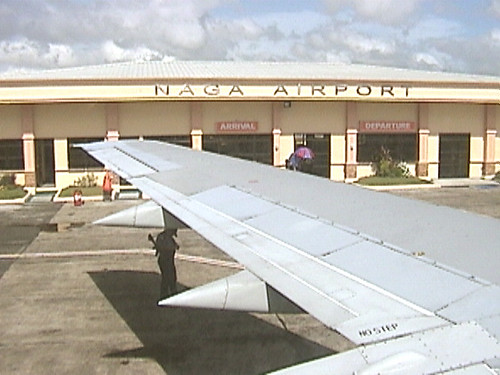Camarines Sur (Tagalog: Timog Camarines) is a province of the Philippines located in the Bicol Region in Luzon. Its capital is Pili and the province borders Camarines Norte and Quezon to the north, and Albay to the south. To the east lies the island province of Catanduanes across Maqueda Channel.
Camarines Sur is the largest among the six provinces in the Bicol Region both in terms of population and land area. Its territory encompasses two cities: Naga City, the lone chartered city, is the province's and the region's most progressive city, also commercial, financial, and cultural center, while Iriga City, a component city, is the center of the Rinconada area and Ri?konada Language. Lake Buhi is where the smallest commercially harvested fish can be found, the Sinarapan or tabyos (Mistichthys luzonensis).

Population. According to the May 2010 census, there is a total of 2,693,821 residents in Camarines Sur, making it the most populous in the region and the 7th most populous in the whole country. The same census also states that Camarines Sur has 288,172 households with an average household size of 5.37 persons, significantly higher than the national average of 4.99. The annual growth rate is 1.86%, much lower than the national growth rate of 2.36%. This rate of growth will double the population of Camarines Sur in 8 years.

Languages. Being in the Bicol Region, the main language spoken in Camarines Sur are Coastal Bikol and Inland Bikol. A dialect of Coastal Bikol, called Bikol Partido is used in the eastern portion of the province around Lagonoy Gulf. Filipino linguists consider the dialect of Coastal Bikol called Bikol Central spoken around Naga City as the standard Bikol easily understood by all Bicolanos. The variant of Bikol Central dialect spoken in Canaman, Camarines Sur is said to be the purest form of Coastal Bikol according to Jesuit Anthropologist Frank Lynch, S.J.). The other important Bikol language spoken in the province is Ri?konada also known as Rinconada Bikol (under the umbrella of Inland Bikol group of languages), which is used by most people in Rinconada District of the province especially in Nabua, Iriga City and people of Rinconada in diaspora. Buhi-non (a language of Albay Bikol another member of Inland Bikol), is a minority language spoken in the town of Buhi and around Lake Buhi. Del Gallego (formerly Danawin, until 1937) is the only town in the province that has a majority of population that speaks Tagalog. Most inhabitants of Camarines Sur understand Tagalog and English
History: Known centuries ago as the Tierra de Camarines, the province is distinctly Spanish-founded settlement. Its name having been derived from "camaronchones" or "camarines", a Spanish word for "kamalig" referring to small nipa or bamboo-made huts by the natives. In 1574, Governor General Guido de Lavezarez referred Camarines Sur to the King of Spain as Los Camarines, after the abundance of camarins-rice granaries - which were conspicuous features of the area. Spanish colonizers later subjugated its people and denominated the area into two distinct aggrupations. The southern portion comprising the area south of the present town of Camalig (in Albay), Sorsogon, the islands of Masbate and Catanduanes, and the area, which is now Partido in present day, then called “Partido de Ibalon”. The northern, upper portion, which included from the present day Camalig town in Albay, and all towns of Camarines Sur and Camarines Norte, was called “Partido de Camarines”. Partido de Camarines was partitioned into Camarines Sur and Camarines Norte in 1829, and thereafter underwent fusion, annexations and re-partitions until March 19, 1919 when two provinces, jointly called Ambos Camarines, were finally separated with their present boundaries by decree of the First Philippine Legislature. The Philippine Revolution started in Ambos Camarines when Elias Angeles and Feliz Plazo, Filipino corporals in the Spanish Army, sided with revolutionist and fought the local Spanish forces on September 17, 1898. Governor Vicente Zaidin capitulated to the revolutionist on the following day. With the arrival of General Vicente Lukban, the revolutionary government in the Bicol Region was established. The American forces occupied the Bicol Peninsula in January 1900. In March of the same year. General John M. Bell was made the military governor of the southeastern Luzon. Civil government was finally established in Ambos Camarines in April 1901. At the outbreak of World War II. Guerilla units were organized by Wenceslao Q. Vinzons that waged underground operations against the Japanese troops stationed in Camarines Sur. After the capture of Vinzons on July 8, 1942, the guerilla movement was carried on by Lieutenant Francisco Boayes. In April 1945, Camarines Sur was finally liberated from the Japanese invaders. Naga City, the former capital of Camarines Sur, was founded in 1573 as “Nueva Caceres” – namesake of the Province in Spain and among the original five royal cities of the colony. It was designated as the Province’s Capital by virtue of Philippine Legislative Act No. 2711 approved on March 10, 1917 until June 6, 1955, when Pili, the adjoining town was declared the Provincial Capital by virtue of Republic Act 1336 up to the present time.















